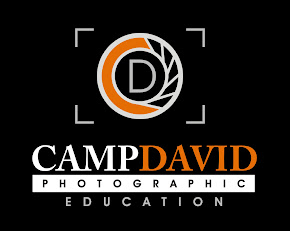First off, I hope everyone enjoyed a wonderful holiday with the people they love the most. After all, that is really what it's all about.
Florida photographer Kevin Newsome has posted a series of YouTube videos with his opinions on different issues within the industry. They're relevant, thought-provoking and mildly entertaining. When a link to one of his videos on "Shoot and Burn" photographers was recently posted in another forum in which I participate, it opened the ever-popular discussion of "should I sell print or files?" While I don't want to get into that one one more time, I do think there were a few important points to be made.
One relatively young and opinionated member chose to point out that selling image files was the only way to make money and that Mr. Newsome was a "relic" and and "artifact" in the industry. This group member continued by stating "This dude is just afraid of losing his rip off of a business that needs to die and I'll be happy to be one of the ones to help make that happen."
Is he right? The fact is, we should all be concerned about losing our businesses, but not because we are "rip offs" or aren't embracing technology and selling files. We should be concerned about the fact that we are underpricing our products and services in an effort to compete with the MWACS and DWACS who enter this field daily. (Just think, there are probably hundreds of new "professional" photographers right now who are still trying to decide what to name their Facebook business page as they caress the shiny new Rebel they found under the tree!)
While I definitely have my own opinion, I'm not going to fuel the files vs prints debate here. What I am going to do is ask you to take a serious look at the amount of profit your studio needs in order to survive.
Photographer and educator Charles Lewis (another "relic" or "artifact") still talks about starting his studio and the number of hats one must wear to own their own photography business. He'd say "all I want to do is take pictures!" Of course, we'd all love that.
However, it takes more than just pushing a button. Those photographers who fail to do the sales, marketing and most importantly, pay attention to the numbers and bookkeeping are doomed to fail. You MUST find a way to make a viable living in this industry by pricing your product (whether image files or physical images) to make a profit.
Those who shoot and burn for cheap rates will be forced to find another source of income to supplement their photography. Those who sell prints for cheap prices will die for the same reason.
It's not about the technology. It's not image files vs prints. It's not "relics vs young guns". It's each and every one of us vs ourselves and our own reluctance and hesitation to sell our products and services at professional rates that allow us to make a decent living while still doing something we enjoy.
 Everything old is not necessarily bad, just as everything new is not necessarily better. Some things got to be old because they stood the test of time and have not crumbled under the pressure of change. Yet, embracing the "out with the old, in with the new" mentality can be a good thing in many ways. Perhaps the New Year is the right time to take the plunge with a new pricing structure. Maybe this New Year will be one in which you eclipse your old sales numbers. What if I told you 2012 would be your breakout year, simply by making a few positive changes in the way you look at your studio; not the photography itself, but the business of photography.
Everything old is not necessarily bad, just as everything new is not necessarily better. Some things got to be old because they stood the test of time and have not crumbled under the pressure of change. Yet, embracing the "out with the old, in with the new" mentality can be a good thing in many ways. Perhaps the New Year is the right time to take the plunge with a new pricing structure. Maybe this New Year will be one in which you eclipse your old sales numbers. What if I told you 2012 would be your breakout year, simply by making a few positive changes in the way you look at your studio; not the photography itself, but the business of photography.My suggestion for a great resolution for 2012 is to take a serious look at your own business model. Crunch your own numbers (or if that's not your strong suit, talk to a bookkeeper or accountant who can help decipher them with you!) We obviously love what we do and have a deep passion for the art. Make 2012 the year you get passionate about the business side of photography and start making it truly profitable!
Happy New Year!
- David Grupa


















